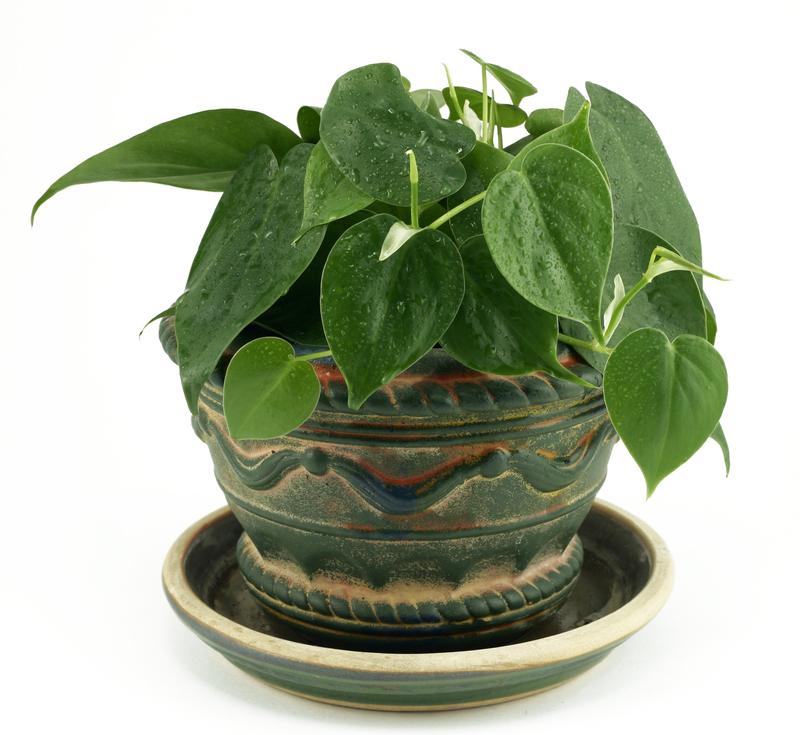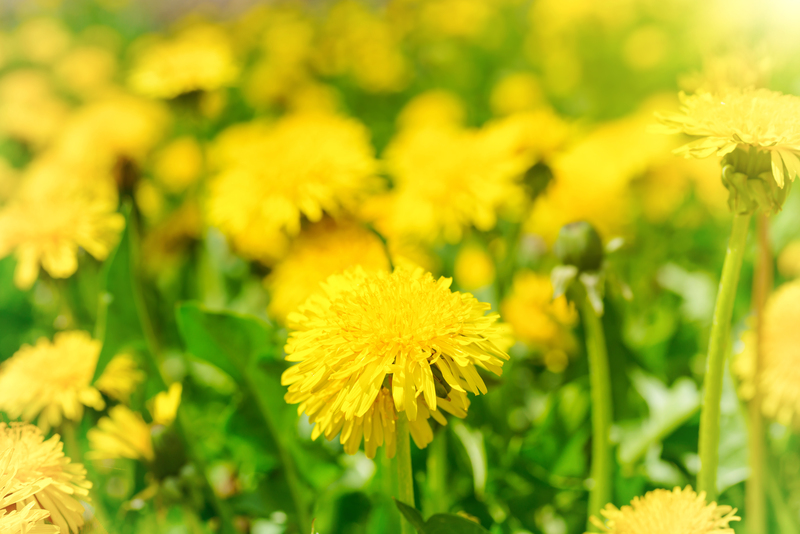Caring for Orchids: From Soil to Sunlight
Posted on 17/09/2025
Caring for Orchids: From Soil to Sunlight
Orchids have captured the hearts of plant lovers around the world. Their exotic beauty, diverse shapes, and dazzling colors make them one of the most popular and intriguing houseplants. However, growing healthy, flowering orchids requires more than just a pretty pot and regular watering. This comprehensive guide to caring for orchids will help you understand everything from the best soil to optimal sunlight, ensuring your orchids thrive for years to come.
Understanding Orchids: A Fascinating Plant Family
Before diving into the specifics of orchid care, it's important to understand a bit about these enchanting plants. With over 25,000 species and more than 100,000 hybrids, orchids belong to the largest family of flowering plants on Earth. Some of the most popular varieties for indoor gardening include:
- Phalaenopsis (Moth Orchid): Known for their long-lasting blooms and ease of care.
- Cattleya: Famous for their large, fragrant flowers.
- Dendrobium: Appreciated for their prolific, showy blooms.
- Oncidium: Referred to as "Dancing Lady" due to the shape of their blossoms.
- Vanda: Renowned for their vibrant colors and unique growth habits.
Each of these orchids has slightly different needs, but they all share fundamental requirements regarding light, water, humidity, temperature, and soil. Understanding these needs is the first step in successful orchid care.

The Right Soil for Your Orchids
Why Ordinary Potting Soil Doesn't Work
If you're new to caring for orchids, you might be tempted to use standard potting soil. Don't do it! Most orchids are epiphytes, meaning they grow on trees rather than in the ground. Their roots require air as much as they need moisture. Ordinary potting soils are too dense and retain too much water, which can cause root rot and kill your orchid.
Best Potting Mediums for Orchids
For healthy orchids, choose a potting mix designed specifically for their needs. The most common orchid medium ingredients include:
- Pine bark chips: Provides structure and allows air to reach roots.
- Sphagnum moss: Retains moisture while staying airy and light.
- Coconut husk chips: Similar to bark, excellent drainage and long-lasting.
- Perlite: Improves aeration and drainage in orchid mixes.
- Charcoal: Helps absorb impurities and sweeten the mix.
Choose your mix depending on your orchid species and indoor climate. For example, Phalaenopsis usually thrive in a blend of bark chips and sphagnum moss, while Cattleyas prefer chunkier, quick-drying mixes.
Repotting Orchids: When and How
Orchids should be repotted every 1-2 years or when the potting medium breaks down and restricts airflow. Look for these signs:
- Bark looks mushy or decomposed
- Roots are circling the pot or emerging over the edge
- Water doesn't drain quickly from the pot
When it's time to repot:
- Carefully remove your orchid from its pot, gently shake off old medium, and trim any dead roots.
- Choose a slightly larger pot with good drainage holes.
- Fill with fresh orchid mix, making sure the roots are covered and secure, but not stuffed tightly.
- Water thoroughly and place in a shaded area for a few days to help with recovery.
Proper soil and repotting are crucial for orchid plant care and long-term growth and flowering.
Lighting Needs: From Natural Sunlight to Artificial Light
How Much Light do Orchids Need?
Light is one of the most important elements for orchid care. However, different types of orchids have different light requirements:
- Phalaenopsis "Moth" Orchids: Prefer bright, indirect light. East or north-facing windows are ideal.
- Cattleyas and Vandas: Need more sunlight and can tolerate a few hours of gentle direct sun, especially in the morning.
- Dendrobiums and Oncidiums: Thrive in filtered light, such as through sheer curtains or dappled with leaves.
The ideal light conditions for most indoor orchids can be found on a bright windowsill where the sun is softened by curtains. Avoid harsh, direct sunlight which can scorch leaves, causing yellow or brown patches.
Signs Your Orchid Needs More or Less Light
Leaf color is an excellent indicator:
- Healthy leaf color: Medium to light green indicates sufficient light.
- Too dark green: Not enough sunlight; move your orchid to a brighter spot.
- Yellowish leaves or red-tinted: Signs of too much sunlight; provide shade.
Artificial Grow Lights for Orchids
If natural sunlight is scarce--especially in winter--your orchids can thrive under artificial grow lights. Full-spectrum LED or fluorescent bulbs, positioned 6-12 inches above the foliage for 12-16 hours daily, will support healthy growth and blooming.
Watering Techniques: Keeping Orchids Happy and Hydrated
How Often Should You Water Your Orchids?
Unlike many houseplants, orchids prefer to dry out between waterings. Overwatering is the leading cause of orchid failure. Follow these best practices:
- In general, water once a week during warm months and every 10-14 days during winter.
- Temperature, humidity, and potting medium affect how fast your orchid dries out--so check before watering.
- Use your finger to test moisture by digging gently into the pot; water when the medium feels dry.
- Never let your orchid pot sit in water; always ensure good drainage.
How to Water Orchids Correctly
- Place the entire pot under a gentle stream of lukewarm water, allowing water to soak through the mix.
- Let excess water drain away completely.
- Avoid getting water on the leaves or crown to prevent rot, especially with Phalaenopsis orchids.
Some orchid lovers use the "ice cube method," placing a few ice cubes on top of the potting medium. While convenient, this approach can shock roots due to cold temperatures. Whenever possible, use room-temperature water for best orchid health.
Humidity Requirements for Thriving Orchids
Most orchids come from tropical climates and need higher humidity than is found in typical indoor environments. The ideal humidity level for orchids ranges from 40% to 70%.
Boosting Humidity for Orchids Indoors
- Humidifiers: A small ultrasonic humidifier can keep your orchids happy, especially during winter.
- Humidity trays: Place pots on trays filled with pebbles and water--make sure pots don't sit directly in water.
- Misting: Lightly mist plants in the morning, but don't let water pool in growing tips or leaves.
- Grouping plants together: This can create a microclimate with higher humidity.
Monitor with a hygrometer to ensure consistent humidity levels for optimal orchid plant care.
Fertilizing Orchids: Feeding for Maximum Blooms
Orchids have unique feeding needs, which is why experts recommend "weakly, weekly":
- Use a balanced orchid fertilizer, such as 20-20-20, diluted to one-quarter strength.
- Fertilize every week during active growth (usually spring and summer), and once a month during dormancy (fall and winter).
- Flush the potting mix with plain water monthly to prevent salt buildup.
Too much fertilizer can harm roots and inhibit flowering, so always err on the side of less with orchid nutrition.
Temperature and Air Circulation: Creating a Comfortable Environment
Orchids are sensitive to temperature changes. The majority prefer daytime temperatures between 65-80?F (18-27?C) and nighttime temps of 55-65?F (13-18?C). Nighttime cooldown is important for triggering bloom cycles in many species.
Orchid Temperature Tips
- Keep away from heating and cooling vents.
- Avoid sudden temperature drops below 50?F (10?C).
- Gently move orchids outdoors in summer for fresh air, but keep in shade.
Air circulation is also critical--stagnant air promotes fungal diseases. A small fan or open window (without drafts) helps orchids stay healthy and prevents pests.
Encouraging Orchids to Bloom Again
Blooming is the reward for proper orchid care.
- Allow a nighttime temperature drop to kickstart flower spike development.
- Continue "weakly weekly" fertilizing.
- Ensure your orchid receives adequate, but not excessive, light.
- Don't repot or change conditions drastically while your orchid is forming buds.
If your orchid won't bloom, check for problems such as overwatering, darkness, or lack of temperature fluctuation.
Common Orchid Care Problems (and Solutions)
Leaf Problems
- Soft, droopy leaves: Usually a sign of overwatering.
- Wrinkled leaves: Indicative of underwatering or root loss.
- Yellow leaves: Can mean too much sun or a natural part of leaf aging.
Root Issues
- Brown, mushy roots: Result of waterlogged, decayed medium; repot and trim damaged roots.
- White, firm roots: Healthy and actively growing.
Pests and Diseases
- Scale, mealybugs, or spider mites: Wipe leaves with isopropyl alcohol or use insecticidal soap.
- Fungal spots: Improve air circulation and avoid wetting leaves.

Frequently Asked Questions About Orchid Plant Care
How long do orchid flowers last?
Depending on the variety and environment, blooms can last from a few weeks (Cattleya) to several months (Phalaenopsis).
Should I cut the flower spike after blooming?
For Phalaenopsis, cut just above a visible node to encourage a secondary spike, or cut back to the base if the spike turns brown. Other orchids prefer the spike removed at the base after blooming.
Is it hard to keep orchids alive?
Not if you master the basics! Most orchids fail from overwatering or poor light. With attentive orchid plant care, you'll find them surprisingly resilient and rewarding.
Conclusion: Orchids, a Journey from Soil to Sunlight
The journey of caring for orchids--from soil selection to sunlight management--is both science and art. Each species demands slightly different conditions, but all thrive with attention to their light, water, soil, humidity, feeding, and temperature needs. With knowledge and gentle care, your orchids will fill your home not only with their legendary beauty but also with a sense of accomplishment. Start tending your orchids today, and watch as these fascinating plants reward you with blooms that last a lifetime!

